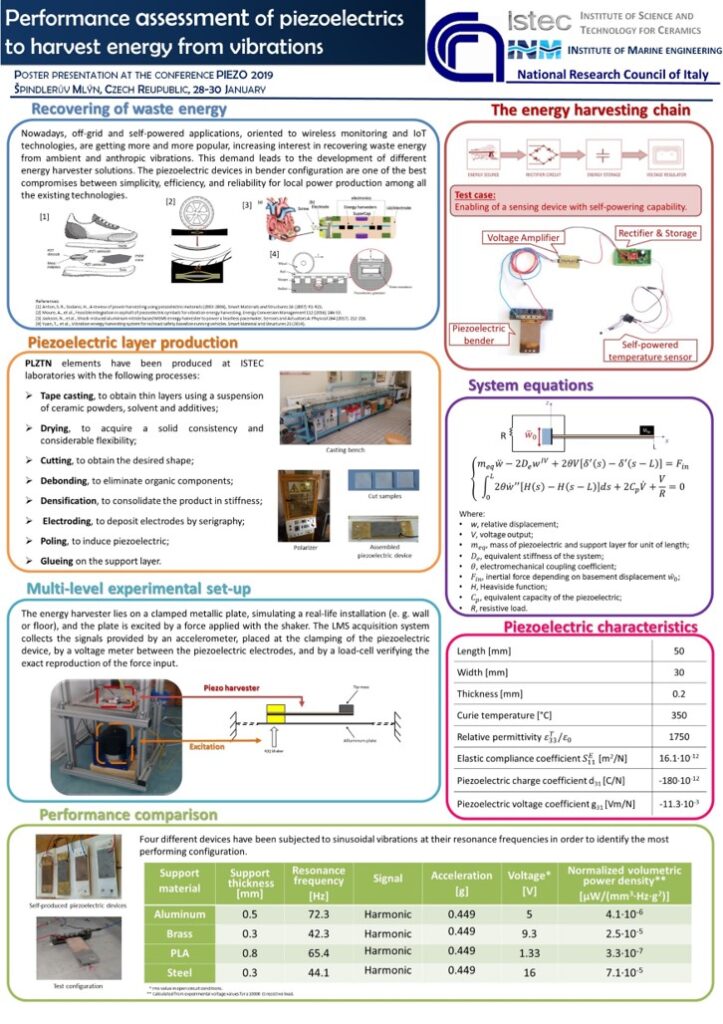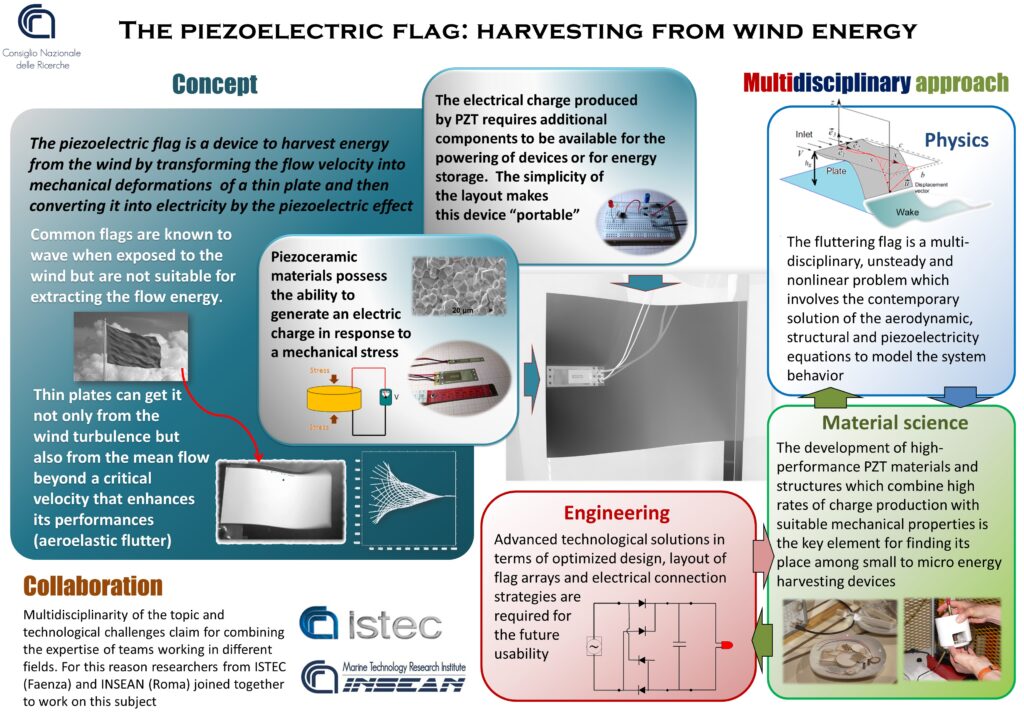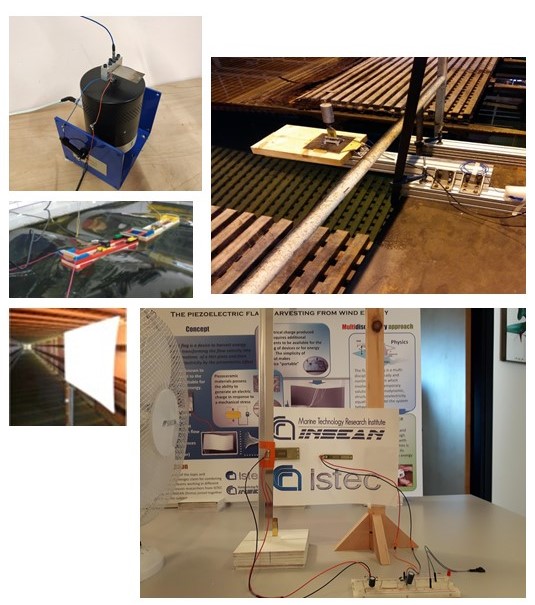Scope
| Electronic devices have become, in the last few years, more and more important in everyday life and are spreading even more with emerging applications such as IoT, Human Health Monitoring, and Building Automation. Also in the ship and offshore engineering field, Structural Health Monitoring or Autonomous Vehicles demand for the deployment of Wireless Sensor Network with self-powering capabilities of the sensor nodes. Although facing a quick increase of functions, their size is getting smaller but the miniaturization and long-lasting capacity trends are threatened by a not equivalently fast evolution of batteries, affected by a significant weight (as percentage of overall system) and maintenance and sustainability issues. Therefore, a new powering solution is rising: energy harvesting, the direct conversion of ambient energy into electricity, making battery recharge or even direct device powering possible with no need for grid connection. Mechanical energy sources (from vibrations and human motion to air flow, water currents, sea surface ripples) are the most interesting in terms of micro-power production. Energy harvesters based on piezoelectric materials (PEHs), producing superficial electric charge when undergoing external stress, can convert mechanical energy into electric energy at voltage levels suitable for electronics applications. The most performing piezoelectric materials are ceramics (typically PZT), but they have a high energy efficiency only in narrow bands close to their resonance frequencies. Thus, many piezoceramic devices must be designed to tune their resonance frequencies with the main frequency of energy source phenomenon. In this context, the research activity of the group deals with piezoelectric energy harvesting devices from structural vibrations, currents, and waves. The group investigates PEHs from both experimental and numerical points of view developing computational models of real devices as well as validating the theoretical outcomes with laboratory tests. The power conversion system, interfacing the harvester with electronic devices, is also studied. At the present stage, attention focuses in particular on Reduced Order Model of the PEH, computationally efficient and easily interfacing with power electronics models and optimization algorithms. In this way, new solutions to overcome limitations are developed, searching for the best sizing of mechanical and electrical parameters for high performing devices and proper frequency tuning. |



Subtopics
| Energy harvesting from vibrations A cantilevered, multy-layer, segmented, piezoelectric device with proof mass for vibrations energy harvesting is studied both numerically (ROM) and experimentally. The PEH design focus on mechanical configuration choices (piezoelectric and support material parameters and geometry) to maximize oscillation amplitudes, and, consequently, optimize energy production and frequency tuning for different vibration spectra. A conversion system (FBR and storage capacitance) is further studied and tested for sensor powering in IoT applications. |
| Energy harvesting from waves The investigated Wave Energy Converter (WEC) consists of two box-shaped floating structure bodies joined by piezoelectric flexible beam elements. Due to the wave excitation, the floaters experience relative pitch rotations, which dynamically deform the piezoelectric linking element and produce a superficial charge distribution. The system is modelled in MATLAB® and COMSOL®, with fluid-structure interaction for power production analysis. To experimentally investigate the WEC response, a small-scale prototype is tested under regular wave excitation in a small basin. The floaters are built in an innovative way with LEGO® bricks to facilitate configuration changes during tests and system updates. |
| Energy harvesting from air flows The activity focuses on exploitation of non-stationary fluid dynamics phenomena. A flag, made of piezoelectric patches glued on an elastic surface, is studied under the flutter aeroelastic instability, experiencing high amplitude oscillations at a predetermined frequency when limit cycles occur. Numerical modelling of the flag (nonlinear Euler-Bernoulli and vortex-lattice method) and fluid-structure interaction are carried on, as well as experimental testing with relative wind excitation. Vortex-Induced vibrations (VIV) or Turbulence-Induced Vibrations (TIV) are studied too. The piezoelectric plate is in vertical cantilevered configuration, with a buff body, linked at the free edge though a bar, inducing via vortex shedding large amplitude oscillations of the supporting structure where the piezoelectric element is located. |
Selected projects
| E-CABIN Joint-Industry Project with FINCANTIERI granted by the Ministry of Infrastructures and Transportation (duration: 2 years, 2017-2018). This multidisciplinary project carried out by several Institutes inside CNR and the University of Trieste aimed at the development of a smart cabin for cruise ships with enhanced sensing, actuation and passenger-oriented services in a highly connected framework. CNR-INM worked on recovery of waste energy from on-board vibrations, pursued with energy harvesting devices by means of piezoelectric cantilevers placed on decks or cabin floors. |
People
| Research Scientists and Engineers Daniele Dessi (PhD), Giorgia Leonardi, Fabio Passacantilli, |
Selected publications
- Dessi, D. and Mazzocconi, S. (2015) “Aeroelastic behaviour of a flag in ground effect”, Journal of Fluid and Structures, 55 , p303 – 323.
- Dessi, D., Leonardi, G., and Passacantilli, F. (2018) “Energy harvesting from waves using piezoelectric floaters”, Proceedings of the ASME 2018 37th International Conferences on Ocean, Offshore and Artic Engineering OMAE 2018, Madrid, Spain, June.
- Passacantilli, F., Galassi, C., Leonardi, G., and Dessi, D. (2018) “Performance testing of piezoelectric energy harvesting for extracting energy from vibration”, Workshop for Young Ceramists, Bologna, November.
- Leonardi, G., Passacantilli, F., Galassi, C., Dessi, D. (2019) “Performance testing of a piezoelectric device for extracting energy from vibrations”, ELECTRIMACS 2019, Salerno, Italy, May.
- Dessi, D., Leonardi, G., and Passacantilli, F. (2019) “Energy harvesting from waves using tandem floaters connected by piezoelectric beams”, 13th European Wave and Tidal Energy Conference EWTEC 2019, Naples, Italy, September.
- Leonardi, G. (2021) “Multidisciplinary modelling and parameter optimization of piezoelectric beam for energy harvesting from vibrations”, Ph.D. Thesis, La Sapienza University of Rome.
- Dessi, D., Passacantilli, F., and Leonardi, G. (2021) “Experimental and numerical modeling of a piezoelectric floating system for wave energy harvesting”, in preparation for in Applied Ocean Research.
- Leonardi, G., and Dessi, D. (2021) “Analytical modeling of unimorph and segmented piezoelectric cantilevers for energy harvesting from base excitation”, submitted in Mechanical Systems and Signal Processing

